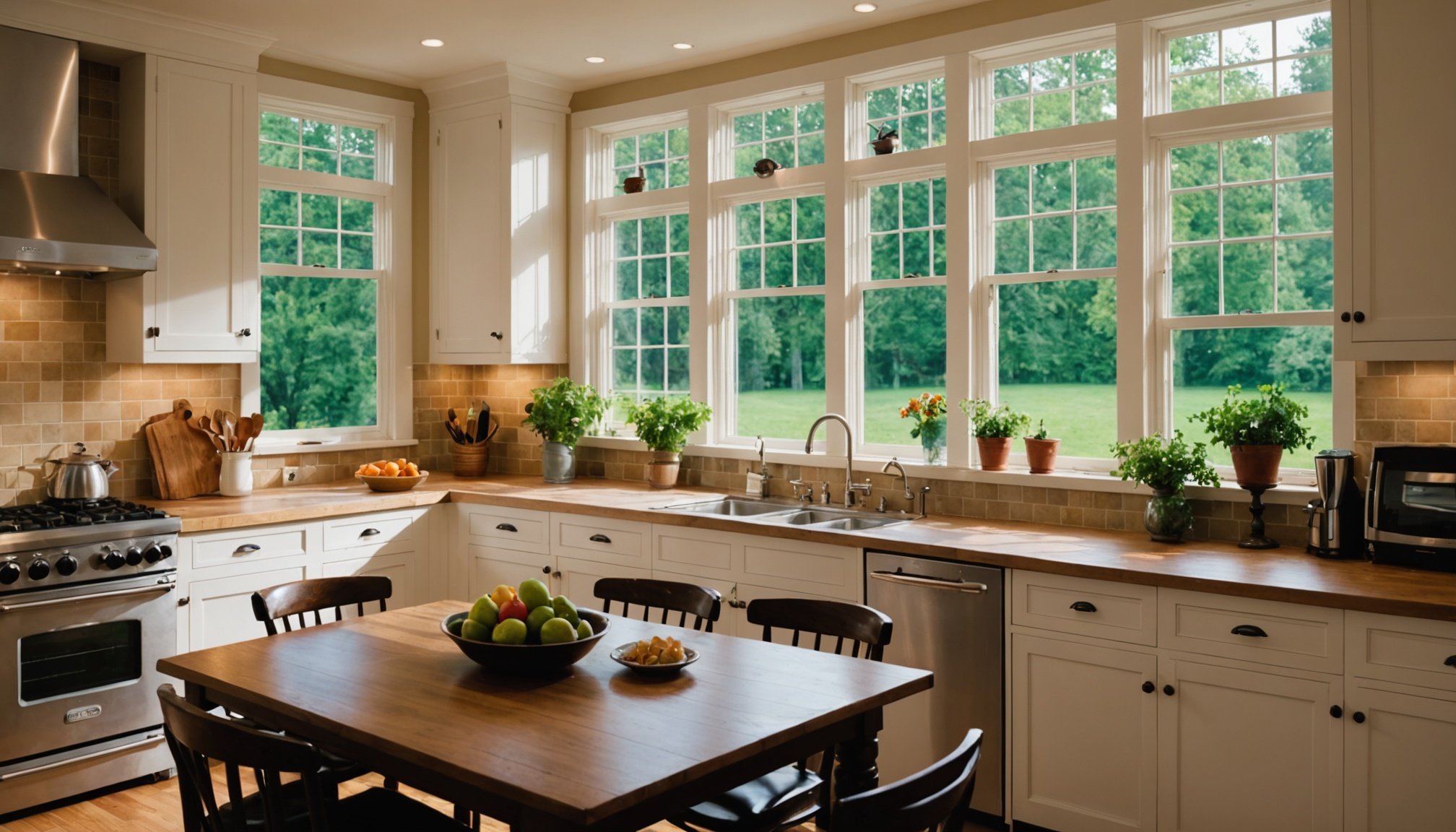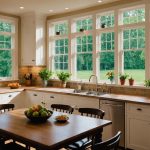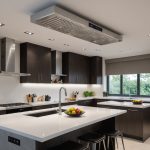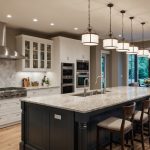Importance of Kitchen Window Positioning
Selecting the right kitchen window design plays a crucial role in enhancing the dining experience. The positioning significantly influences both the ambiance and the psychological impact that natural light has on meal enjoyment.
Dining Ambiance
The placement of a window can drastically alter the atmosphere within a dining space. Well-positioned windows allow for optimal daylight, which can create a warm and inviting setting. Natural light can make a room feel more spacious and vibrant, ultimately contributing to a positive dining experience. The right kitchen window design can help balance light distribution, reducing glare and ensuring comfort during meals.
Have you seen this : Enhance food safety and nutritional value in your kitchen with uv light sanitizers
Psychological Impact of Natural Light
Natural light has been shown to boost mood and improve overall well-being. In a dining context, this translates to enhanced meal enjoyment and even more appetising food presentation. Proper window positioning can also reduce the dependency on artificial lighting, fostering an eco-friendly environment.
Influence of Views and Aesthetics
The aesthetics of a view can elevate the dining atmosphere. A well-placed window that frames a picturesque view, such as a garden or landscape, adds a layer of tranquillity to the dining experience. This visual connection with the outdoors can make meals more pleasurable, providing a serene backdrop that complements the interior design.
Have you seen this : Revitalize your kitchen with uplifting quotes: a fresh strategy for encouraging healthier eating choices
Natural Light and Its Effects
Introducing more natural light into your home can transform your dining atmosphere while offering significant health effects. The glow of daylight not only enhances the visual warmth of a space but also fosters a sense of well-being.
Enhancing Meal Enjoyment
Natural light profoundly impacts mood during meals. Studies indicate that exposure to natural light can boost appetite and elevate a person’s mood, making interactions congenial and relaxed. This connection is particularly apparent during shared meals, where families experience a harmonious dining environment.
Energy Efficiency Considerations
To harness the full benefits of natural light, window orientation plays a crucial role. Positioning windows to maximise light exposure while efficiently managing heat can significantly reduce energy costs. Opting for energy-efficient windows further enhances thermal comfort without compromising brightness, proving environmentally and economically beneficial.
Natural Light and Social Interactions
Light is pivotal in nurturing social interactions. Sunlight naturally encourages more lively conversations, fostering stronger connections during shared meals. This ambiance positively impacts family gatherings, promoting a welcoming and inclusive environment. The interplay of natural light thus plays an integral part in how families bond around the dining table.
Practical Design Considerations
When designing a kitchen, the placement of windows plays a significant role in making your space both functional and aesthetically pleasing. Strategic window layout enhances natural light, making your kitchen feel larger and more welcoming. It is vital to consider how window placement will impact everyday usability. A window above the sink is a common choice as it allows for pleasant views while you work.
Balancing functionality with design is crucial. Too many windows might leave little room for storage, while too few can make the space feel dark. Therefore, it’s important to combine kitchen design tips effectively. Also, consider how windows affect the room’s energy efficiency and temperature control.
Window treatments provide a great solution for managing light and privacy. Roman shades or café curtains can soften harsh light without blocking it entirely. Blinds or shutters, while not as soft, offer adjustable privacy and light control. Incorporating these treatments in your renovation ideas not only enhances the kitchen’s appearance but can also optimise light effects, which is an integral aspect of a well-designed kitchen.
Views and Their Importance
In today’s fast-paced world, having kitchen views that offer a connection to the outside world is more important than ever. A well-thought-out design can greatly enhance meal enjoyment and create a soothing environment. Let’s dive into how integrating landscape with your kitchen can transform your dining experiences.
Impact of Outdoor Views on Dining Experience
The aesthetic and psychological benefits of having scenic views from your kitchen are profound. Looking at nature while dining can reduce stress and boost mood. Incorporating scenic views during meals introduces a calming element that enhances overall meal enjoyment. It’s a natural remedy that promotes relaxation and satisfaction.
Creating Views with Kitchen Layout
To maximise the impact of kitchen views, it’s crucial to focus on window placement. Strategic positioning of kitchen windows ensures optimal exposure to your surrounding landscape, making the most of natural beauty. The integration of the kitchen layout with the surrounding landscape can seamlessly blend indoor dining with the outdoor experience, enhancing meal enjoyment.
Case Studies on Effective Window Placement
Numerous examples highlight how the thoughtful placement of kitchen windows can vastly improve meal environments. Real-life designs showcase effective strategies that accentuate views, as endorsed by experts in the field. These case studies serve as blueprints, offering inspiration on achieving an ideal kitchen view setup.
Tips for Optimizing Window Placement
When considering window placement strategies, it is crucial to prioritize natural light and views to enhance indoor environments. Position windows on the side of the house with the maximum exposure to sunlight, generally the south-facing side in most climates. This not only reduces the need for artificial lighting but also contributes to a more pleasant atmosphere, particularly in dining and kitchen areas.
For those looking to improve kitchen optimization, incorporating a window above countertops or sinks can make an extraordinary difference. This placement allows users to enjoy the changing vistas while performing daily tasks, promoting a more inviting and efficient workspace.
Dining habits often benefit from thoughtful window arrangements. Adjust existing spaces by aligning dining tables near large windows. This not only provides comforting views but also fosters a harmonious dining ambiance through basking in natural light.
For smaller kitchens, innovative solutions such as corner windows can be employed. These maximize light intake without occupying substantial wall space, ensuring compact areas feel more open and connected to the outdoors. Emphasize on installing windows in strategic spots to maintain valuable storage and preparation spaces intact. Through these thoughtful adaptations, optimizing window placement enhances both functionality and enjoyment in home settings.











